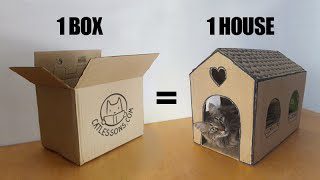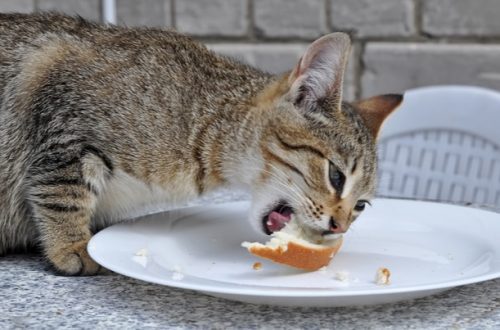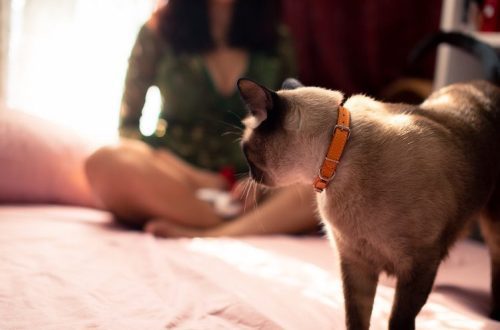
Sensitive digestion in cats
Choosing the right diet for a pet is a task in which an individual approach and control by a veterinary nutrition specialist is important. It is especially difficult to choose a diet for cats with sensitive digestion. Let’s figure out what to consider when choosing the right food for cats with a sensitive gastrointestinal tract.
Not all alarm signals of the pet’s gastrointestinal tract should be interpreted as a sign of sensitive digestion. Only a veterinarian can determine if certain symptoms are related to sensitive digestion. If the cat vomits, the pet itches, flatulence appears, trips to the tray are accompanied by an extremely unpleasant odor, the stool is liquid or very dry, going to the toilet causes difficulties for the four-legged friend, it is urgent to show the pet to the veterinarian.
Tell the veterinarian in detail about feeding your ward, feeding errors, recent stress that the pet has experienced. This can be important in identifying the cause of the problem. Discomfort in the gastrointestinal tract can be caused by parasites, hair accumulated in the stomach, etc. Based on the results of the examination, the veterinarian will diagnose the fluffy patient. If the problem is indeed sensitive digestion, consult a veterinary nutritionist to find the right diet for your striped dog. A balanced diet for cats with sensitive digestion is the basis of health and well-being.

Choose professional foods that are suitable for cats with sensitive digestion (grain-free CORE holistic foods). The feed class must be at least super premium. In the production of super premium and holistic feeds, only high-quality meat and fish are used, which reduces the likelihood of an allergic reaction.
When switching to a new food, as well as when changing the type of feeding, on the recommendation of a veterinarian, it is necessary to transfer the pet to a new food gradually, over seven to ten days, gradually adding a new food to the already familiar one.
In the case of self-prepared cat food, it is important to discuss the diet in detail with a veterinary dietitian. In this case, the diet must be supplemented with vitamin and mineral complexes, which the veterinarian will select.
If the pet is especially sensitive to certain ingredients, in the case of ready-made feeds, it will be easier to understand which component his body reacts negatively to. If a four-legged friend has a sensitivity to chicken meat, for example, salmon may be suitable for him. Grain-sensitive pets are recommended grain-free (CORE). Talk to your veterinarian about the possibility of switching your pet to a monoprotein diet, that is, with one meat ingredient (for example, grain-free CORE salmon). This may be a solution if the cat is hypersensitive to several ingredients.
Even holistic food may not be suitable for your ward, since the body’s reaction to food is individual. After switching to a new food, observe the reaction of the pet. If the alarming symptoms recur, then the food is not suitable. But if with the new food the cat’s stool returned to normal, mood and well-being improved, then do not switch from one food to another, stop at one suitable option. For cats with sensitive digestion, frequent changes in diet are not very helpful.
If your pet is experiencing gastrointestinal problems, table treats are out of the question. Warn all household members and guests about this. For the health of a four-legged friend, a strict diet, agreed with a veterinarian, is necessary. Talk to your veterinarian right away about a safe treat for your pet. One way or another, a cat will need a treat – for encouragement during training and the educational process.
The pet should always have clean dishes made of safe materials. The cat at any time should be able to drink clean, better even running water. Drinking fountain, several containers of clean water, placed throughout the house, motivate your ward to consume enough fluids. On average, a pet needs 40 ml of water per kilogram of body weight per day, adjusted for the activity of the mustachioed-striped and the weather – cool or hot.
It can be quite comfortable for a cat to eat several times a day for a little bit. If dry food is available to your pet all day, there will be no problems. The combination of dry and wet food will help to make up for the lack of moisture in the pet’s body, but in this case, you can feed the cat with wet food in the morning, and closer to dinner, put a portion of dry food available for the pet, which the cat can eat at a convenient speed.
If your cat is not drinking enough water, be sure to add wet food to her diet. You can either switch to wet diets completely or combine them with dry food. The main thing is to choose the diets of one brand and not change the lines unnecessarily.

Features of nutrition of cats should not become an obstacle to a full happy life of a pet. We wish that a balanced diet becomes the basis of the health and well-being of your pet.
The article was written with the support of the Valta Zoobusiness Academy. Expert: Lyudmila Vashchenko — veterinarian, happy owner of Maine Coons, Sphynx and German Spitz.






